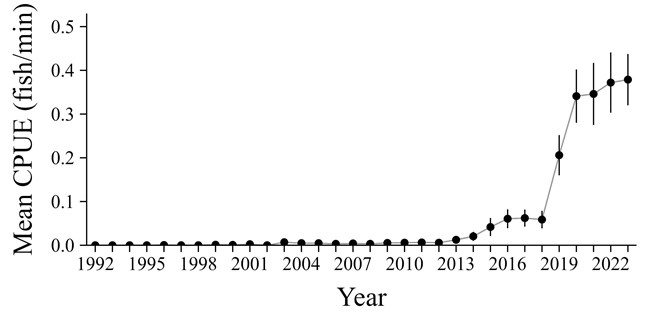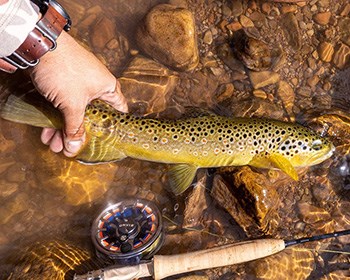The 2025 Brown Trout Incentivized Harvest is paused until further notice.How to ParticipateThe incentivized harvest began on November 11, 2020. Current rewards are $50 per Brown Trout over 6 inches in length removed from the Colorado River between Glen Canyon Dam and the mouth of the Paria River. An additional $15 will be paid for a PIT tag that is submitted with the fish.
How to Join the Brown Trout Incentivized Harvest Videos
Know Your Trout 

Left image
Right image

AZGFD / David Rogowski History of Fishing on the Colorado River Upstream of Lees Ferry
The ThreatThe Colorado River below Glen Canyon Dam is home to native fish species like flannelmouth and bluehead suckers. Two endangered fish species, razorback sucker and humpback chub, can also be found in the Marble and Grand Canyon stretches of the river. Native fish are highly susceptible to predation by fish eating predators like brown trout. As brown trout grow, they begin to feed heavily on other fish species. As sub-adults and adults brown trout are 17-times more likely to eat other fish than are rainbow trout. The increase in number of brown trout in Glen Canyon has raised concerns for fish managers. As the Glen Canyon brown trout population grows, they could migrate downstream and pose an immediate threat to native fish species like the endangered humpback chub. Brown trout are also able to thrive in warmer river water than rainbow trout and are better adapted to hunting other fish in the murky river water of the Colorado River when the Paria River and side canyons are flowing. 
Aristidis Harris Why We Need Your Help
Brown Trout Harvest Inventory
* Some fish were caught by NPS employees and not eligible for the reward.
For More Information Contact:Jeff Arnold, Fisheries Biologist, National Park Service (928) 608-6266 |
Last updated: February 26, 2025

